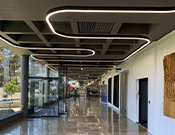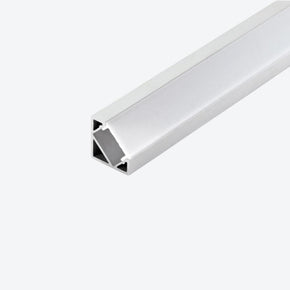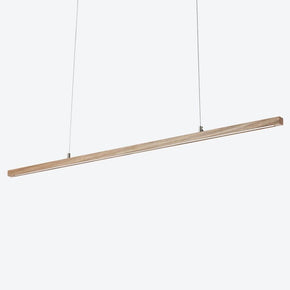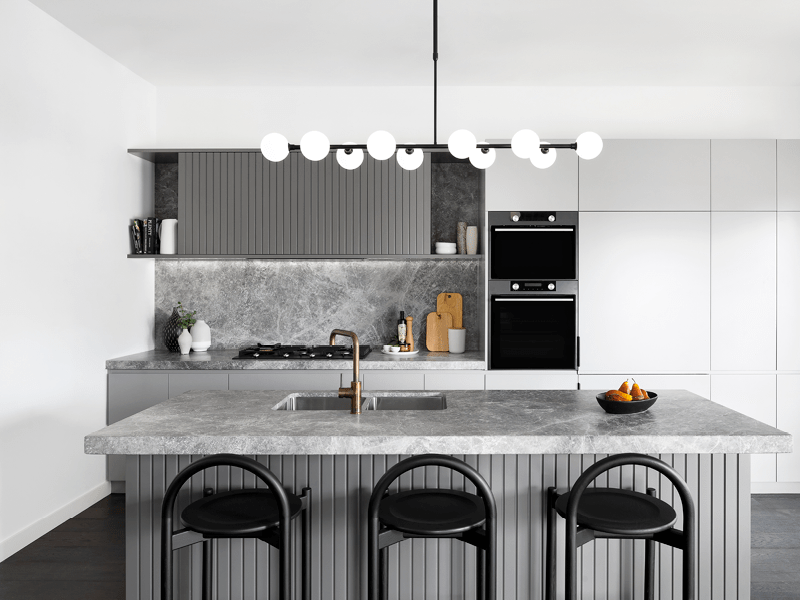- No products in the cart.
- ``
How to design the perfect kitchen for eating and entertaining
23
Sep
The kitchen is the heart of the home. It’s the place where you start your day and it’s where your family gathers at night. Kitchen lighting needs to be flexible to illuminate a variety of tasks, from reading the morning paper to cooking dinner, to socialising over a few wines. But no single light can perform all the functions needed in the kitchen. That’s why layering different light sources is essential. A well thought-out lighting design should ensure your lighting not only looks great, but also aids functionality.
How to light your kitchen for easy cooking
The kitchen is a room where you can really show off with your lighting and use a combination of different effects to produce stunning results.
To ensure you have sufficient lighting in the kitchen for food preparation and cleaning, add task lighting to work surfaces. Key areas to focus light are the cooker and sink, with around 350lx being a good amount of light for these zones.
With the rising cost of electricity, you should be looking to use some of the many fantastic energy-efficient LED solutions available to reduce your bill and your energy consumption. If you have wall-mounted cabinets, then low-profile LED fittings mounted to the underside is a good option. Alternatively, you can offset the cabinets a short distance from the wall and hide LED strip behind to create a halo. Both approaches are excellent ways to provide a wash of light across worktops, while also minimising shadows. Backlit splashbacks, enhanced with LED strips and profiles, is another great way to provide task lighting.
Track lighting or linear lighting is a great modern edition for over the kitchen bench. The bonus with track lighting is that you can adjust the position and direction of the lights without an electrician. Alternatively, you can get a custom linear light to match the length of your bench, ensuring even spread light for all your cooking needs.

How to create a dining area that’s both functional and stylish
The dining table in most family homes has many uses - reading the newspaper, doing homework, eating dinner. But these tasks require different levels of light. You’ll need brighter lighting to stay alert and avoid eye strain when reading, but you’ll need much lower and more intimate light levels when dining and entertaining. The most important thing for dining areas is making sure the fittings are on dimmable circuits, so you can have maximum output when needed, but also a dimmer cozy light level.
Pendants above dining tables can provide a great feature and focal point within your space, and can be used to create pools of light on the table. Feature pendants vary massively in style and price. The key is to find luminaires you really love that suit your décor and style. Oversized pendants are on-trend at the moment and will instantly make a real impact. But if your ceiling height is low, oversized pendants can look cumbersome. Choosing the right size and quantity is something the lighting consultant can help you with.
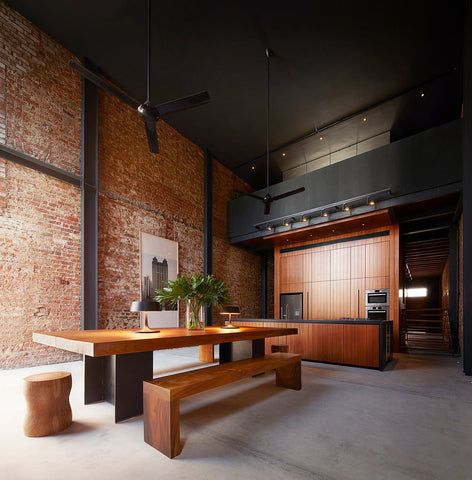
What about the rest of the room?
Provided your task areas, such as your kitchen island and dining table, are well illuminated, then lighting the remaining empty floor space is often not needed. It’s a common mistake to have a grid of downlights washing every inch of a room with a uniform light level. It’s a waste of both light and energy.
To make a room appear bright, light should wash the walls and ceiling, not the floor. That being said, hiding lights inside an island or the kicker boards at low level can add interest and the soft lighting can give your cabinets a floating illusion. However, care should be taken to ensure that the LEDs are not reflected in floor tiles, as this will ruin the effect.
Finally, if you have artwork and photos, then using spotlights to highlight these will create focal points in the room and draw attention to the things that really give your home personality.
Easily adjust the mood with a lighting layer control system
With multiple lighting layers comes multiple lighting circuits. Rather than having six switches lined up on a wall, you can eliminate wall clutter with a digital lighting control system.
With the touch of a button, you can brighten the ceiling fixtures while you prepare food and cook, or you can adjust your island lights to a more subdued setting for dining and entertaining.
Control systems allow you to easily adjust the level of light to increase your comfort level. They’re also great at lowering the amount of energy you’re using and reducing your electricity bills.
Need help enhancing your kitchen or dining area with lighting layers?
The expert team at about Space can help you achieve the perfect mix of lighting layers in your kitchen or dining area. If you need help with your kitchen or dining lighting, get in touch with the About Space lighting design studio.






